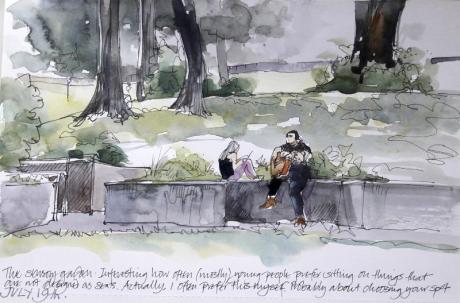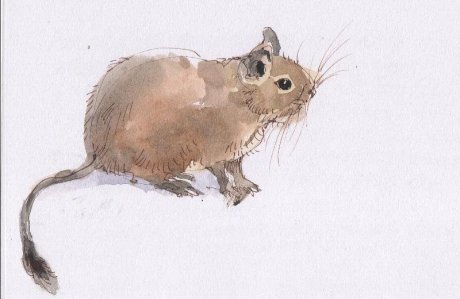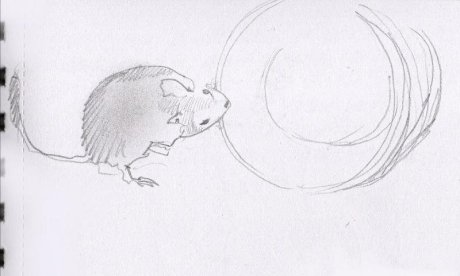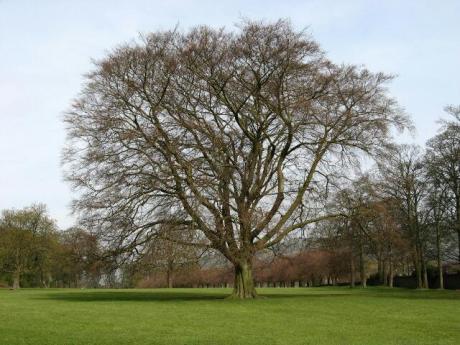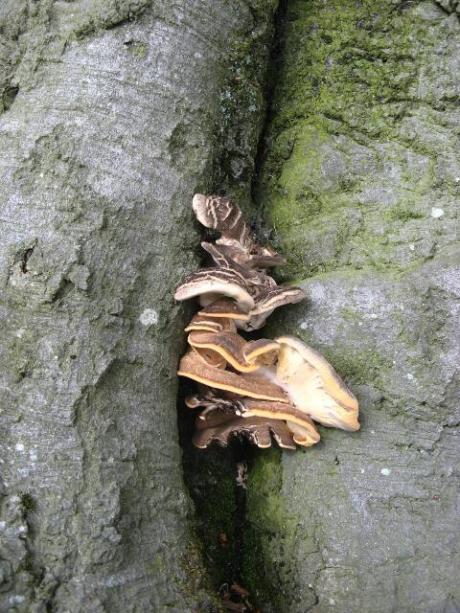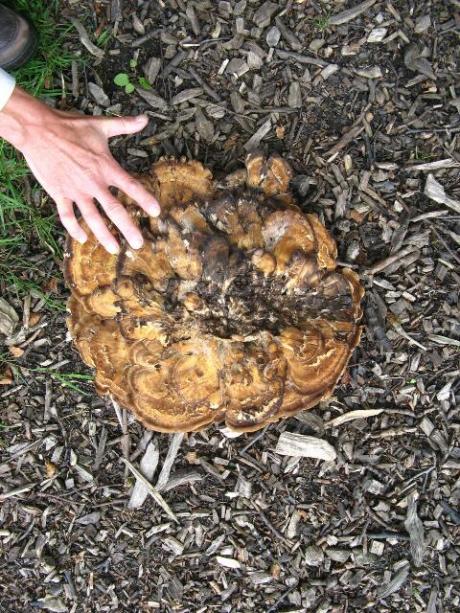I’m doing a prolonged, slow walk around the perimeter of Cliffe Castle Park, sketching as I go. (There’s a map at the end of this post). Part 1 started (for no particular reason) in the Sensory Garden close to the Holly Lodge entrance, and I’m moving on in a northerly direction, anti-clockwise, across the Sports Field parallel to the Skipton Road….
So…. if you leave the Sensory Garden through the gap in the hedge you find yourself at the top of the large, gently sloping field that stretches all along the lower edge of the park between the Skipton Road on one side and the path known as Dark Lane at the other. The views from here are some of the best you can find anywhere in the park – standing here looking across Airedale its hard to feel you’re in town and not way out in the country.
About two-thirds of the way down the field at this point you can still see the site of the giant tree that until last summer dominated the whole of this landscape. The Great Beech was truly remarkable and I wrote about it in a tribute post when I marked its sad passing – I wish I had sketched it before it eventually had to be felled, but I always found myself unable to draw it or even photograph it in a way that could express its enormous scale. I wish I’d tried to sketch it; it was extraordinary, and looking again at the photos I did take made me remember what it felt like to stand underneath its colossal branches. Generations of people in Keighley knew and loved this tree.
But the sapling oak that’s been planted here seems to be doing well despite the hot dry summer.
The field isn’t laid out for sports in any formal way – no pitch for cricket or football – it’s simply a good place to play games of all kinds, and big enough for a lot of games at the same time.
A couple of weeks ago I watched a group of girls who’d come prepared to play a game of what looked to me like rounders, but while I sketched them a lot of discussion and organisation was going on, and after a while that game seemed to be put on hold and a tennis ball was batted about a bit. Hey, what does it matter what game you play? It was a lovely afternoon, not too hot, a pleasant breeze blowing, everyone enjoying themselves.
I’ve seen all sorts of activities on this field; frisbees are popular, kites are sometimes flown, teams are organised, balls are kicked or batted or thrown (often for dogs).
The castellated wall that runs round the edge of the park marks the boundary at the Skipton Road. Walls are a prominent feature of the landscape in the park, and they’re a subject in themselves – some are ancient, and some have been re-modelled and repositioned over time. From a sketching point of view a wall is a great thing to have in a landscape because it adds perspective and scale, and a nice sharp line to contrast softer shapes of trees and grass and people as well as often being a dark, solid form in the background.
Just inside the perimeter wall where the Skipton Road curves to the left at the roundabout there’s an avenue of ornamental cherry trees, and the unpaved path that runs along the edge of the field continues under the canopy of these trees, which in spring are a mass of pink blossom. In autumn the leaves turn delicate shades of apricot and lemon yellow and coppery red, and I picked up one or two windfall leaves that had already turned colour. I’m guessing that this line of trees may have been planted at the same time as the boundary was moved when the road layout changed – the older castellated wall ends just where the avenue of cherry trees starts, and the newer wall is lower and topped with flat flagstones. This means the trees are clearly seen from the road which was probably intentional, as they’re an eye-catching sight when they’re covered in blossom. But from inside the park they also successfully conceal most of the traffic on the Skipton Road, at least in summer, so the view is an uninterrupted leafy landscape.
To give an idea of where I started this walking project, here’s a map taken from one of the interpretation boards with my additions to show the location of the first two posts in this series. Part three to follow in due course!







